Introduction to Docking Panes
Introduction
This topic will explain what docking panes are, how to alter the location of a docking pane, the available positions of docking panes, which docking panes exist, and also explain the controls found in the panes.
Docking Panes
The defining feature of a docking pane, is that it has the flexibility to be docked, i.e., snapped, or placed, in various predefined positions of the main application. All docking panes can be turned on and off by right-clicking in the ribbon bar to view the list, and clicking on the desired docking pane in the list. Open docking panes are shown in the list with a check mark.
Components of a Docking Pane
The most obvious features of a docking pane are the header and the content as seen below.
| Header | Quick access menu | Content |

|

|

|
The panes also have a few other features at the top right corner, as seen in the images below. These include the pin / unpin button and the close button.
| Pin / Unpin | Close |
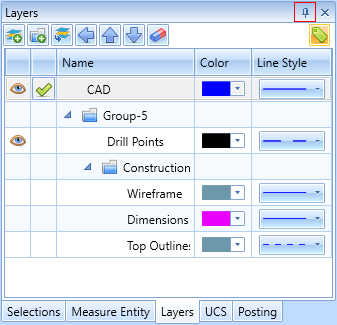
|
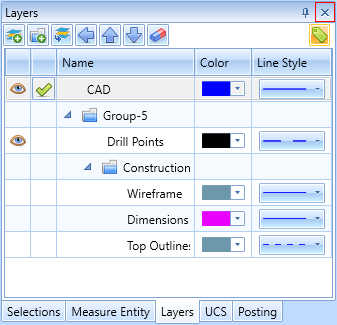
|
Tip: Right-click in the ribbon bar of the interface to access the docking pane list. The list will show all available docking panes and will have check next to those that are currently open. You can click on a docking pane with a check to close it, or click on a docking pane without a check to open it. Once a docking pane is closed, accessing this list is the only way to reopen it.
Lastly, when the pane is docked into the same position as another plane, they will each be tabbed, as you can see in the image below.
| Tab |
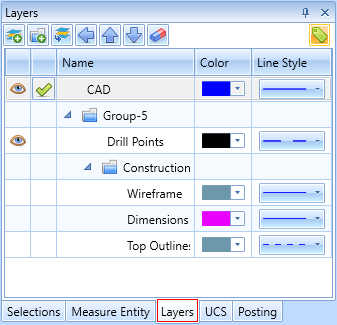
|
How to Use Docking
To move an individual pane from its current position, you can left-click and drag its tab. Once you begin to move your mouse, the docking arrows should appear to show you where the pane can be docked. If you release the left-click button prior to highlighting one of these arrows, you will leave the pane floating right where it is.
| Moves only Layers | Moves entire pane with all layers |
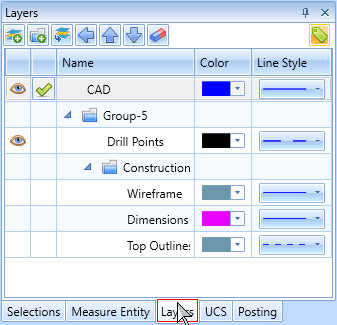
|
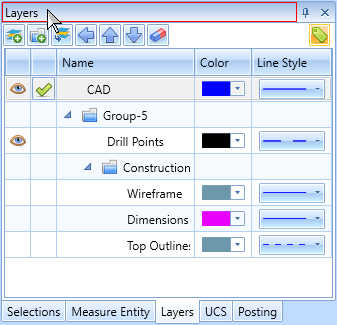
|
Besides leaving the pane to float, you can dock the panes as well. When docking a pane, you can dock into the main application, or with another pane. When docking with the main application, you can choose between left, right, top, or bottom. When docking with another pane, the a middle dock option will appear. Using the middle dock option on a pane will place the pane in the same position as the pan being docked with, and the panes will the be tabbed so you can choose between them.
| Docking Options in the Main Application vs. Individual Panes | |
| Main Application | Individual Panes |
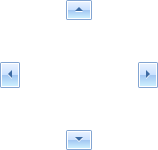
|

|
Note: Panes can also be moved by clicking and dragging the header, but when two or more panes are together, you will be relocating all panes when moving from the header.
What Panes can be Docked
Besides the wizards and dialog boxes, every pane in BobCAD-CAM can be docked. These include:






